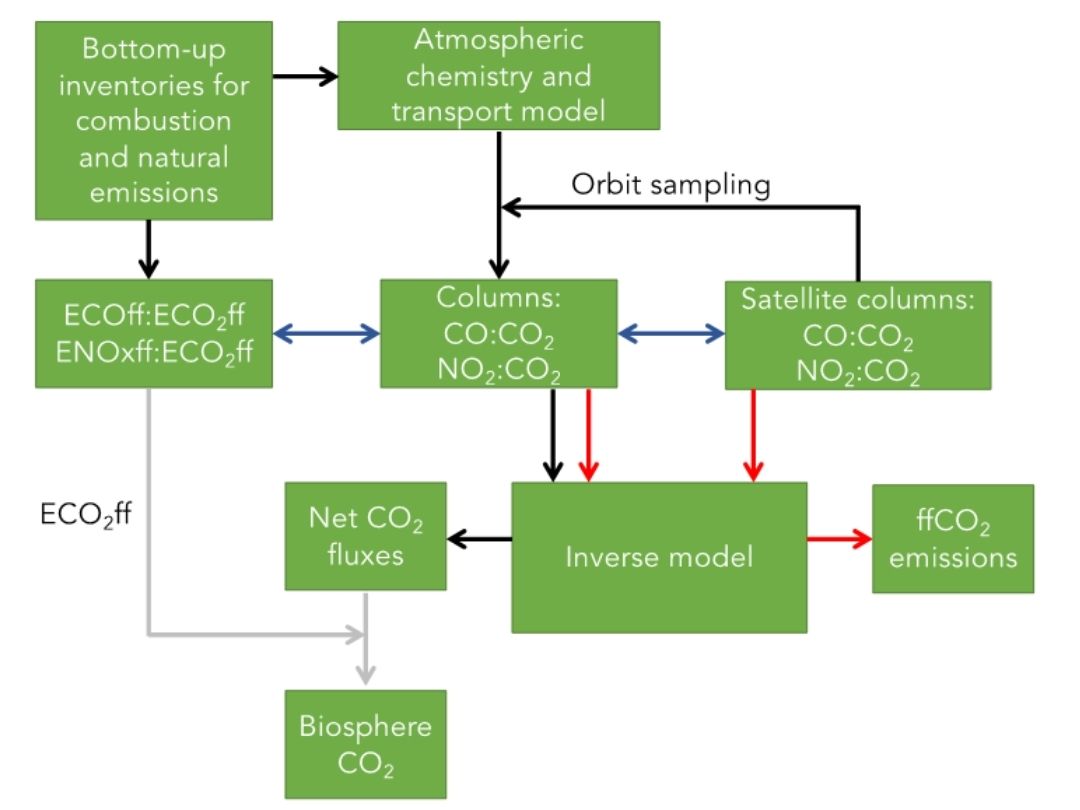File : D2.14
Author : Paul Palmer et al. (UEDIN)
We assess how nitrogen dioxide (NO2), carbon monoxide (CO) and formaldehyde (HCHO) can be used as proxies to determine the combustion emission of CO2 using satellite observations and in situ measurements. We focus our analysis on 2018 when there is a full complement of data. We find that that NO2 and CO are the better candidates to identify incomplete combustion, but both have their own challenges associated with properly describing their atmospheric chemistry. We find a weak positive relationship (R<0.4) between national-scale emission inventory estimates of CO:CO2 and NOx:CO2, reflecting the importance of different sectors within a country that have different combustion efficiencies. We also find a weak positive correlation between the CO:CO2 inventory ratio and satellite observed column enhancements DXCO:DXCO2 (R<0.2), suggesting some consistency and linearity in CO chemistry and transport. However, we find a stronger negative correlation between the NOx:CO2 inventory ratio and satellite observed column enhancements DXNO2:DXCO2 (R<0.50), driven by non-linear photochemistry. Both of these observed ratios are described well by a regional atmospheric chemistry transport model, providing confidence that the model is a useful tool for interpreting these tracer-tracer ratios. Our preliminary joint CO2:CO inversion results using in situ data demonstrate the potential usefulness of including error correlations between CO2 and CO to estimate combustion CO2 emissions. During July 2018 we find that including CO2:CO error correlations results in error reductions of up to 15% for combustion CO2 estimates, and also improvements in natural fluxes of CO2 and emissions of CO across Europe. This work paves the way for developing the method for satellite data.

Figure 1 : Overview of the work being shown in this technical note
